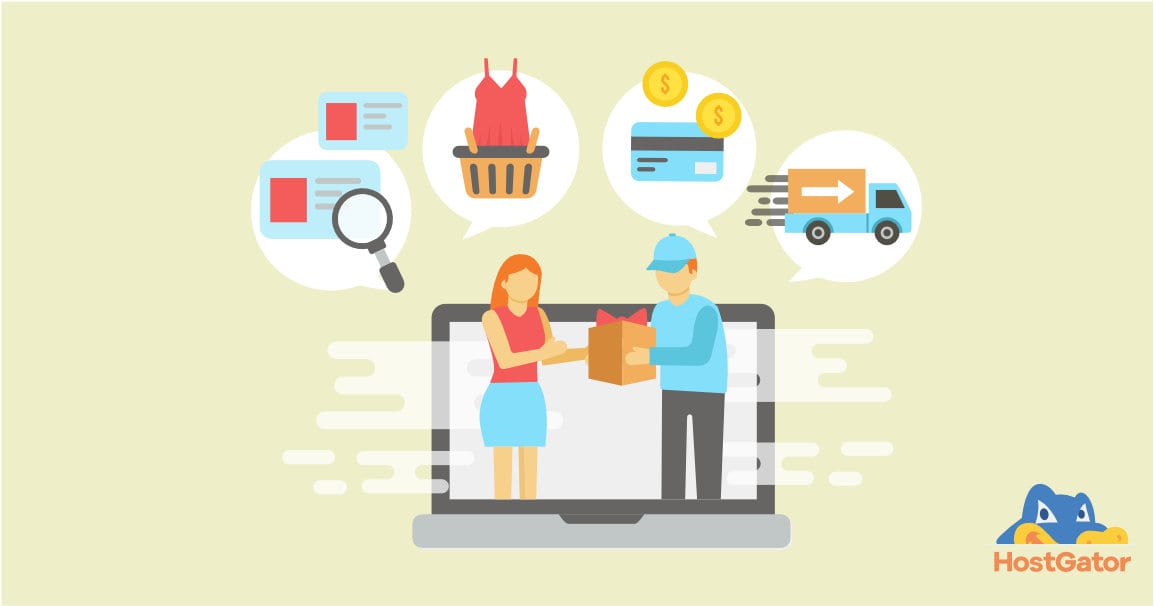The best thing about an eCommerce website is reaching a global audience. When your business exists online, you aren’t limited to only the 90-mile radius of customers that may potentially visit your store. You have the potential to reach the same amount of people in India as you do, say, Alaska.
But, building a website and an online store isn’t the end of the story and the only key to success.
To truly capture the attention of your target audience, engage your followers, and boost your sales, you need to drive traffic to your website strategically.
The quickest way to generate meaningful eCommerce traffic is to buy a targeted paid ad on an online platform your customers like to visit (e.g., Google, Facebook, Instagram, etc.). Paid advertising is an excellent tactic considering nearly 65% of people click on Google Ads when they are looking to buy an item online. But, it’s not the only strategy.
This article will review the top nine uncommon ways eCommerce sites can drive more traffic to their website.
1. Grow Your Email List
Email marketing is one of the most effective ways to communicate with your target audience continually. When someone subscribes to your email list, they aren’t just clicking on a paid advertisement one time. They are opting in to hear from you regularly.
Not only is email a great way to foster customer retention, but it also has a significant return on investment. An email marketing survey of 73 companies found that for every $1 spent on email marketing, the average return on investment is $50.
You can grow your email list by placing a subscribe button on the home page of your website, including a pop-up subscription notice, and even putting a subscribe button at the end of your blog content.
2. Guest Blog on Other People’s Websites
Content marketing is all the rage these days, and it makes sense why. Year-over-year growth in unique site traffic is 7.8x higher for content marketing leaders compared to followers.
Blogging pays off, but it’s challenging and expensive to produce content. In fact, B2B marketers report the top three content marketing challenges as follows:
- 69% cite lack of time,
- 55% say producing enough content, and
- 47% mention it’s difficult to create the kind of content that engages.
This is why owners of high performing websites welcome guest blogging. You may be wondering why you would spend your time and energy creating content for someone else’s website.
Here’s why. The deal for a guest blog is usually a link back to your website, which means two important things for your eCommerce business. First, the link directs consumers back to your website where you can make sales. Second, it provides a backlink to your website, which is fantastic for SEO purposes.
3. Tap Into the Influencer Network on Social Media
When is the last time you purchased something because your favorite social media star or celebrity said you should?
For me, it was this month when Reese Witherspoon told me to read Glennon Doyle’s “Untamed,” and I bought the book. I do what Reese says, and I bet you do too.
While you might not be able to get Reese Witherspoon to endorse your product, you can look into courting other top influencers in your industry that would love your brand.
When you build a relationship with these influencers, you can count on them leveraging their social media following to show off your product and, in turn, drive traffic back to your website.
4. Start a Blog of Your Own
Your content creation skills aren’t just meant for other high domain authority websites. Save some of your brilliance for yourself and add a blog to your eCommerce website.
Writing high-quality blog posts that are optimized for the search engine results pages (SERPs) is an awesome customer acquisition strategy.
For example, let’s say you sell digital content about how to work from home (very relevant right now). If you create high-quality blog posts around that topic, Google may reward your content with a top spot on its SERP for relevant keywords.
5. Start a Referral Program
Referrals from friends and family members are the number one trusted source of advertising.
Think about it. Let’s say you were looking for HVAC services from Company A and Company B, and trying to make a decision. If a friend called and told you how great their experience with Company A was, what would your choice be? That’s right! You would go with Company A, no questions asked.
Do yourself a favor and launch a referral program. With the help of a referral program, you can leverage the loyalty of your best customers.
All you have to do is create a rewards-based referral promotion. If one of your customers sends a friend and family member to your website and they sign up for your services or buy your products, you send a gift or discount to your loyal customer.
Here is an example of what a referral program looks like on the popular travel website, Airbnb.
6. Link to Your eCommerce Sites on Your Social Media Profiles
Billions of people use various social media networks each day. If you have a decent following, it pays to link your eCommerce websites to all of your social media profiles. You can include a link to your website on your personal profiles as well as your business profiles.
For example, here is what it might look like on Twitter. Rand Fishkin, the co-founder of SparkToro, has 435K followers on Twitter. To fully leverage his influence for the good of his company, he includes a link to his business website in his social profile.

Take the time to include a link to your eCommerce website on Facebook, LinkedIn, Instagram, Twitter, and any other social network you use.
7. Check Your Site Speed
The longer it takes your website to load, the more traffic you will lose.
Data from a selection of eCommerce websites shows how long customers will wait for a site to load before leaving. The results indicate that bounce rates were just below 10% for websites that took less than 3 seconds to load, 24% for four-second load times, and 38% for five-second load time.
If your eCommerce website loads slowly, you’re in trouble. Not only will you lose customers initially, but stats show that close to 80% of visitors who get frustrated with a site’s loading time will never visit that site again.
8. Advertise on a Podcast
Over half of all Americans have listened to a podcast, and 32% listen to podcasts every month. Within the last ten years, the number of Americans that listen to podcasts has more than doubled, and the rates are growing every day.
Podcasting draws a broad audience, and businesses are already spending millions on podcasts ads with projections of ad spend to reach over $500 million.
The cool thing about placing an ad on a podcast is you can leverage podcast audience data to advertise on a podcast that matches your audience. You can promote your website to audiences based on demographic data, location, or even interests.
For example, Crime Junkie is a popular podcast that captures the attention of, well, crime junkies. Guess who sponsors this podcast? Companies like Hunt A Killer and SimpliSafe, which is the perfect audience match for the Crime Junkie Audience.
I’m not saying that all podcast advertising will work, but I am saying that I personally just visited the Hunt A Killer website yesterday and subscribed all because of a Crime Junkie ad.
9. Optimize Your Website for Mobile Commerce
You may be tempted just quickly to throw up any website. However, keep in mind the functionality and responsiveness of your website matters. Your site needs to be optimized for desktop and mobile searches and purchases.
Recent stats show that 80% of shoppers used a mobile phone inside a physical store, and 79% of smartphone users have recently made a purchase online using their mobile device.
More than three-fourths of mobile device owners use their phones to make purchases. This means to capture the most amount of sales possible, you need to make it easy for customers to check out on your website via a desktop and a mobile device.
Are Your Ready to Drive More Traffic to Your eCommerce Site?
Setting up your eCommerce website is exciting. It’s one of the first steps to getting your business up and running. It’s critical to remember that you need to set up your eCommerce website with a trusted platform like Virtue Media.
Virtue Media comes with an eCommerce plan that makes it easy for you to optimize your website for search and mobile purchases, manage your store, and keep your blog updated regularly.
For more information on how to get started, check out our website today.




![Yes, B2B Websites Can Use Personalization Too [Here’s How]](https://mdvirtue.com/wp-content/uploads/2022/02/Yes-B2B-Websites-Can-Use-Personalization-Too-Heres-How-400x250.jpeg)

0 Comments